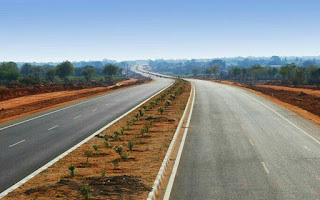Highways and Major Roads:
Highways are the most important transportation system part which plays an important role in the development of the area.
The plan of Indian roads was recommended by the Jaykar Committee which said that connecting the remote and urban areas by roads should be the top priority. The first phase was based on the Nagpur road plan.
2. State Highways
3. Major District Roads
4. Village Roads
After that, the Bombay Plan was introduced and Expressways were added to the list.
The plan of Indian roads was recommended by the Jaykar Committee which said that connecting the remote and urban areas by roads should be the top priority. The first phase was based on the Nagpur road plan.
It was divided as:
1. National Highways2. State Highways
3. Major District Roads
4. Village Roads
After that, the Bombay Plan was introduced and Expressways were added to the list.
The total highway built to date is around 79232 kilometers connecting the country from north to south and east to west and all major cities and industrial hubs. The Great Golden Quadrilateral was the biggest ever project which was started by the government to connect the various financial and industrial hubs with one road over the country and this project was completed by the year 2012 and are mostly self-controlled due to proper turns and not much intersection over the length.
This highway connects Delhi, Mumbai, Bengaluru, Kolkata which then is connected by the State Highway.
 |
| National Highway |
 |
| State HIghways |
 |
| Major District Roads |
 |
| Village Roads |
Comments
Post a Comment
Thank You for visiting, if you have any questions please feel free to ask: